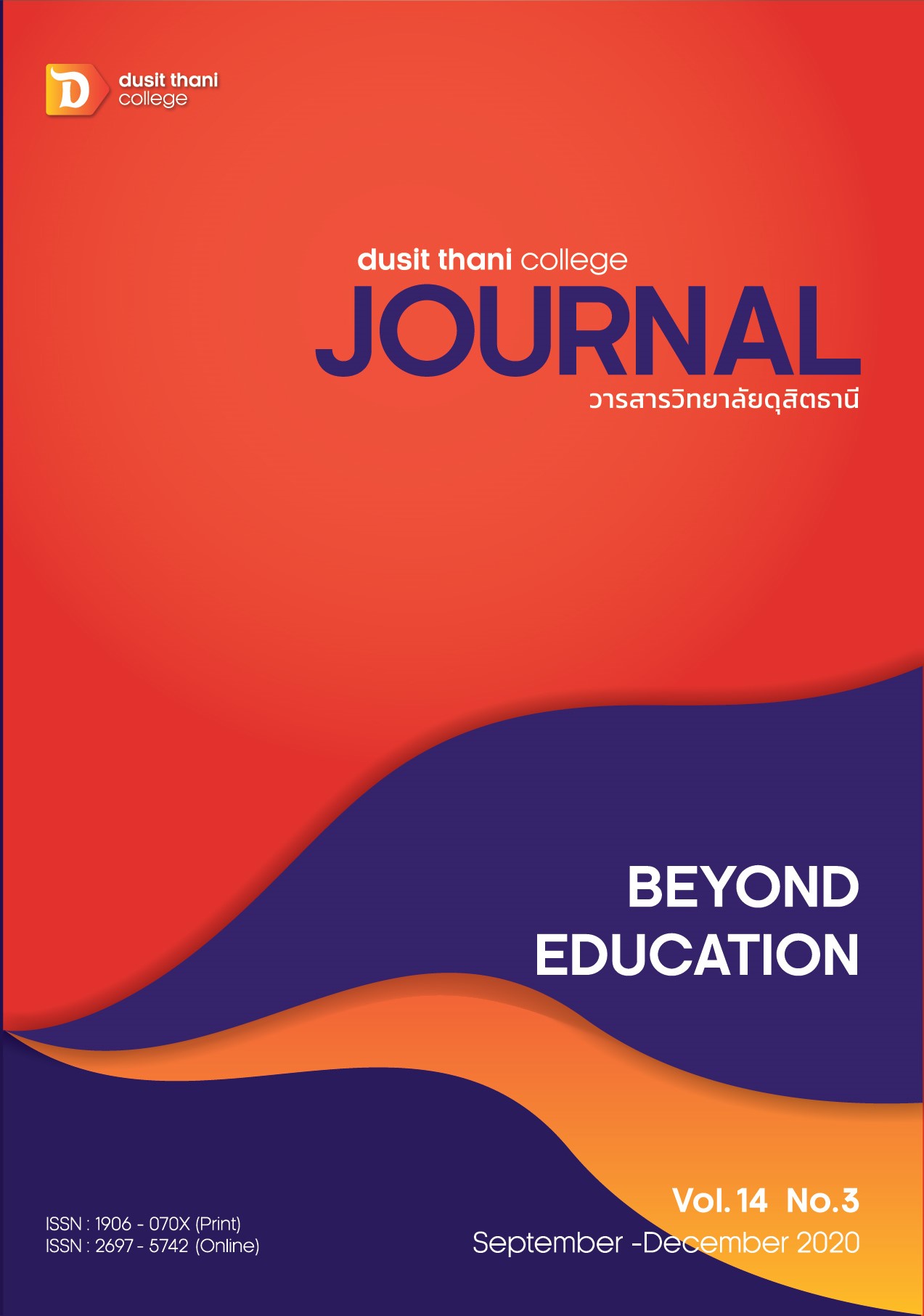Retirement Saving Behavior: The Case of Bank Officers in Bangkok Metropolitan Area
Main Article Content
Abstract
This study aimed to study the behavior of saving for retirement of commercial bank employees in Bangkok and its vicinity. In addition, the results of the study showed that the behavior of saving, especially the behavior of saving for retirement. Currently, Thailand has more diversified investments to achieve a better understanding of the saving behavior of the target sample in order to make an effective plan for their upcoming retirement. For this study, data was collected. The questionnaire was used to survey 370 samples from 400 samples because the 30 samples did not have sufficient income after deduction for retirement savings. In the most cases, the samples have a savings plan for retirement about 11-15 years in advance. As for the factors that affect the savings, increasing income was the most important factor that affected investment for retirement, and it has a positive correlation with saving. Among these factors, it was found that their investments were focused on investing in medium risk assets. People aged 44 and over were the most group who prepared to retire compared to other groups. In addition, the study found that the education level and length of service was positively correlated with retirement savings. On the other hand, expenditures had a negative correlation with the savings portion.
Article Details
Article Screening Policy
- All research and academic articles to be published must be considered and screened by three peer reviews in the relevant field / article.
- All articles, texts, illustrations and tables published in the journal are the personal opinions of the authors. Editors don't always have to agree. And no responsibility whatsoever is the sole responsibility of the author.
- The articles to be published must never be published. Where did you first publish? And not in the consideration of other journals If the audit found that there has been a duplicate publication It is the sole responsibility of the author.
- Any article that the reader sees as being plagiarized or impersonated without reference. Or mislead the work of the author Please let the journal editor know it will be your greatest blessing.
References
Gordon, R. J. (1990). What is new-Keynesian economics?. journal of Economic Literature, 28(3), 1115-1171.
Jitsuda Thongpan. 2003. Factors determining household savings in Thailand. Self Study Master of Science (Business Economics), Thammasat University.
Keynes, J.M. (1936). The general Theory of Employment, Interest and Money. New York : Harcourt Brace Jovanovich.
National Statistical Office. (2016). Thai population structure 2000-2568. Retrieved October 23, 2020, from NSO Thailand: http://service.nso.go.th/nso/nso_center/project/search_center/23project-th.htm
Ricardo, R. (1890). Assessing ricardian equivalence. Journal of Economic Surveys, 17(1), 55-78.
Sittirat Meets Year 2005. Effects of Compulsory Retirement Savings - Foreign Case Example. Journal of Finance and Finance. Year 17 No. 55/2005 (March 2005) pages 80-85.
Solow, R. M. (1956). A contribution to the theory of economic growth. The quarterly journal of economics, 65-94.
Sophon Rotthamrong. (2000). Culture of Savings. Thammasat Economic Journal. Retrieved October 23, 2020, from http://www.econ.tu.ac.th/?action=journal&menu=26&type=journal&issue=49&pgmenu=77
Yamane, T. (1967). Statistics: An Introductory Analysis, 2nd Ed., New York: Harper and Row.


